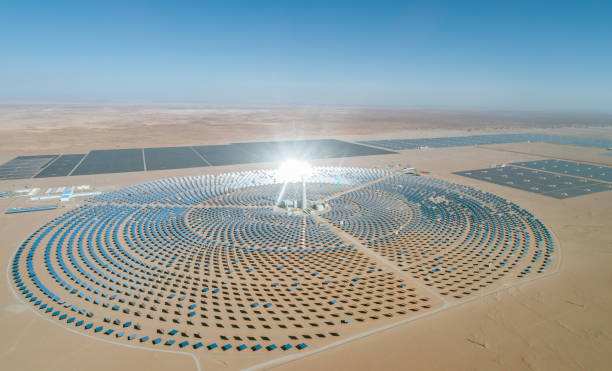Solar Energy in Morocco
Morocco has become a major player in solar energy development, positioning itself as a leader in renewable energy in Africa. The country has a strong commitment to reducing its dependence on fossil fuels and increasing its use of renewable energy sources like solar power.
Key Highlights of Solar Energy in Morocco:
1. Noor Solar Complex (Ouarzazate Solar Power Station)
- Located near the town of Ouarzazate. The Noor Solar Complex is one of the largest solar power plants in the world. The complex uses both concentrated solar power (CSP) and photovoltaic (PV) technologies. Its aim is to generate clean electricity and reduce carbon emissions.
- The first phase of Noor finished in 2016, with a plan to expand it to 580 MW, enough to power about 1.1 million homes.
- Noor is a key part of Morocco’s broader goal of producing 52% of its electricity from renewable sources by 2030.
2. Morocco’s Renewable Energy Ambitions
- Morocco’s renewable energy strategy is ambitious. The country is investing heavily in solar, wind, and hydroelectric energy. Solar energy, in particular, plays a crucial role in these plans, given Morocco’s sunny climate and vast desert regions.
- The goal is to have 42% of its total energy mix come from renewables by 2020 and 52% by 2030—with solar contributing a large portion.
3. Rural Electrification with Solar
- Solar panels are also being used to provide electricity to remote rural areas that are not connected to the national grid. Many small communities have been powered through solar mini-grids. The individual solar home systems, improving the lives of thousands of people by providing reliable and sustainable energy.
4. Solar Panel Manufacturing
- Morocco is also positioning itself as a manufacturing hub for solar panels and related technology. In 2017, Morocco’s state-owned company MASEN (Moroccan Agency for Solar Energy) announced initiatives to develop solar technology industries, further boosting the country’s green economy.
5. Sustainability and Job Creation
- In addition to reducing carbon emissions, solar projects in Morocco have the added benefit of creating jobs, both in construction and in the renewable energy sector itself.
- The Noor project, for example, created thousands of temporary jobs during construction, and as renewable energy continues to expand, new opportunities in maintenance and development arise.
Morocco’s Potential for Solar Energy
- Geographical Advantage: Morocco has vast, sun-drenched desert areas, particularly in the south, making it an ideal location for solar power generation. The country experiences an average of 3,000 hours of sunlight per year, offering significant potential for solar energy generation.
- Exporting Solar Energy: There have been talks about Morocco becoming an energy exporter to Europe, with the idea of sending solar-generated electricity through undersea cables or other technologies. This has the potential to turn Morocco into an energy powerhouse in the region.
Overall, Morocco’s investment in solar energy. Not only helps reduce its own carbon footprint but also boosts its economy and provides solutions for rural energy access. If you’re interested in Morocco’s environmental progress or any specific solar initiatives there, let me know!

